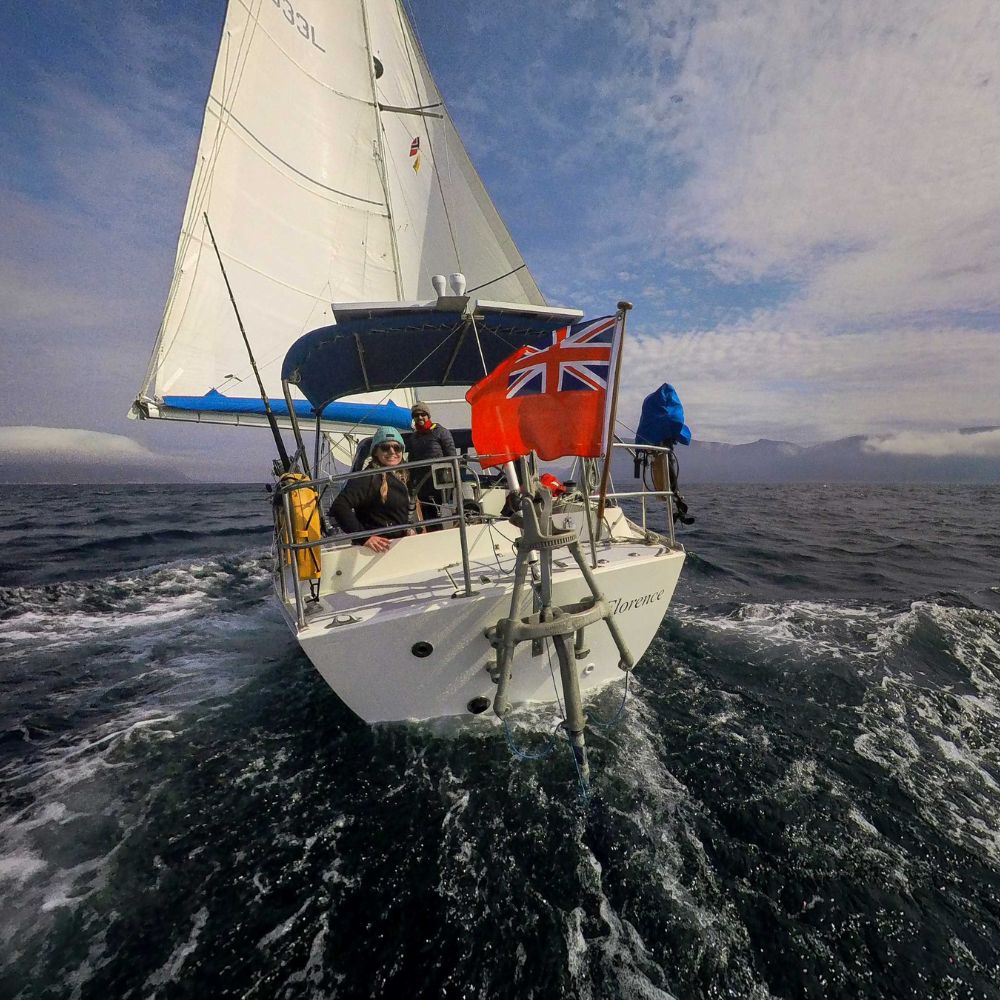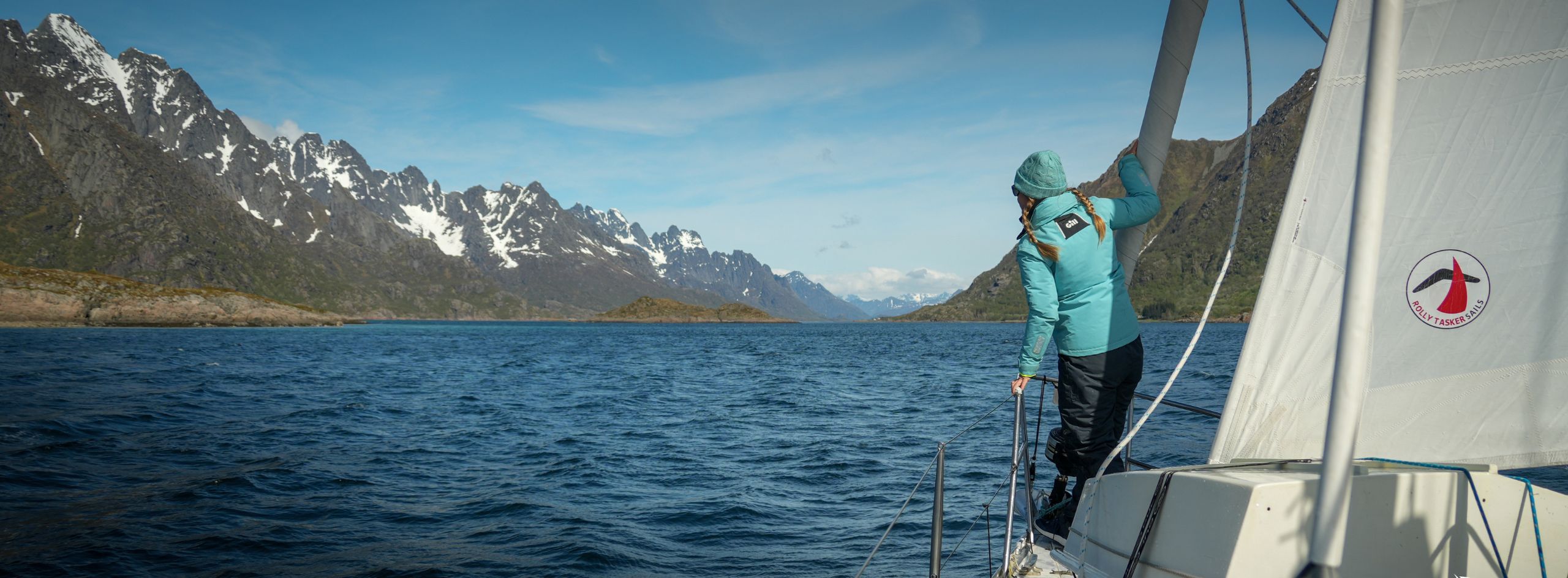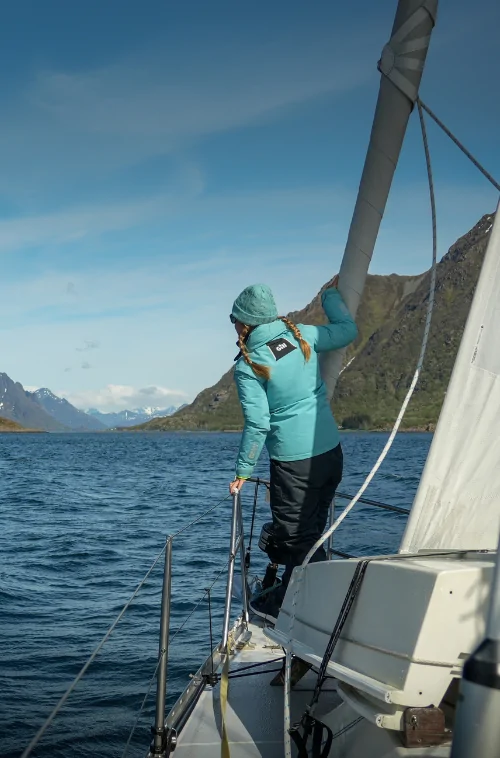Charting a Course for the Arctic with Sailing Yacht Florence
After seven years circumnavigating the globe, Matt and Amy of Sailing Yacht Florence are embarking on their most ambitious adventure yet: a voyage into the Arctic Circle towards Svalbard. This expedition is truly the “polar opposite” of their previous experiences, presenting a new climate, unique wildlife, and a fresh set of challenges designed to stretch their comfort zone.
We caught up with the duo to discuss the meticulous preparations for Florence and themselves, the evolving challenges they’re facing en route, and what daily life looks like aboard their trusty vessel as they venture further north into the land of the midnight sun.
1. What specifically drew you to Svalbard as your next major sailing destination after your global circumnavigation and UK adventure?
Svalbard is literally the polar opposite to what we have done before. After 7 years completing a circumnavigation of the world mostly in the tropics, Svalbard and sailing within the Arctic circle offers a new climate, new wildlife, and new challenges which stretch our comfort zone, excite us, and make us slightly nervous, the recipe for a true adventure.
2. What specialised preparations, for both Florence and yourselves, have you undertaken for sailing into Arctic waters?
Where do we start to answer this one? We gave Florence a huge refit after sailing around the world and in preparation for this trip. The list of what we replaced was long to bring Florence into top condition so that we can rely on her and can focus on enjoying the experience instead of fixing issues (hopefully). Specific upgrades for the higher latitudes were adding insulation throughout the hull and installing a new heater.
We also added a furler for our staysail so we don’t have to go out onto the foredeck to use it, reducing the amount of time we have to spend outside the cockpit was a safety concern with the colder waters meaning falling over the side would be more severe than in the tropics. We also upgraded our lifejackets to 290 newton capacity so that they are sure to turn us over onto our backs if we do fall in, that can be a problem with the smaller life jackets when wearing lots of layers which are designed to trap warm air.
From a personal kit list we have a lot more warm layers of course, and our foul weather gear is a size larger so that we can fit all those warm layers on underneath it!

3. How did you plan your route north? Are there any key waypoints or strategic stops you’re making on the way to Svalbard?
We always have a rough overarching plan for the trip but leave the detailed planning for closer to the time when we have a better idea of the weather. For this trip we split it into sections: South coast to Scotland; Scotland to Bodo in Norway; Bodo to Tromso; Tromso (where we will check out of the Schengen area) to Svalbard (which we expect to be the most challenging ocean passage); Then a similar list in reverse to get home. Alongside that there are some key places that we want to visit such as the Lofoten islands and one or two of Norway’s Fjords which look spectacular.
4. What have been the biggest challenges you’ve faced so far on this leg of the journey towards Svalbard?
So far to be honest and gripping the wooden chart table tightly as we answer this, things have been going far better than we had hoped. Other than one day getting thrown about by the sea state crossing the north sea, the weather has been very kind to us. The biggest problem we have had was hiking ashore and having to turn back due to so much snow covering the route that it became dangerous, apparently it is not summer up here yet!
5. As you head further north, how are you adapting to the changing conditions – like colder temperatures?
We are sailing north at the same pace as spring, enjoying never ending daffodils and spring flowers so the warmer temperatures are moving up with us. It is colder but not much worse than winter on the south coast of the UK and we have become used to wearing a couple of extra layers. The biggest change is that we now have 24-hour daylight, we have reached the land of the midnight sun! That is taking a little bit of getting used to, it makes ‘night’ watches much easier, but our natural sleep patterns are disrupted by the lack of darkness.

6. How has daily life aboard Florence changed as you sail towards the colder, more remote regions? Are your routines different?
Yes, we can basically do anything at any time in the 24-hour daylight, so we have to check the clock to remind ourselves of bedtime. Changing watch also takes longer as there are a lot more layers to be put on before venturing out on deck!

7. What Gill Marine gear are you finding most essential for keeping warm and dry as temperatures drop? Are there any specific pieces you wouldn’t be without?
We are both in love with our down jackets (Portland and Shannon) for warmth and comfort. Lots of layers is the name of the game onboard, base layers – mid layers – one or two down jackets – OS1 outer layers – Beanies and 2 pairs of socks inside our boots!
It is not always so cold, we have had a couple of glamour days, and the shorts even came out once. But as soon as there is any breeze the wind chill is a killer, blowing down from the snow-covered slopes alongside us, and we pile on the layers.

8. What are your immediate plans once you reach the Svalbard? What’s the first thing you hope to see or do?
The first and most important thing to do when we reach Svalbard is to rent a rifle for polar bear protection. You are not allowed ashore outside of the main town without either a rifle or a flare gun for polar bear deterrence. Usually, we feel quite safe onboard Florence, but on this trip, we are very aware that to a polar bear we probably look like a pair of tasty seals drifting around on a small ice floe, and polar bears are tenacious hunters. We hope to see a polar bear but not for dinner onboard please.
9. What advice would you offer to other adventurous sailors who dream of taking on an expedition to the high latitudes?
For advice to other sailors with high latitude expedition dreams, perhaps we should leave that one until we return from Svalbard with some first hand experiences to relate. So far we can say that Norway is one of the most spectacular places we have visited around the world, so it is definitely worthy of being dreamt about.







